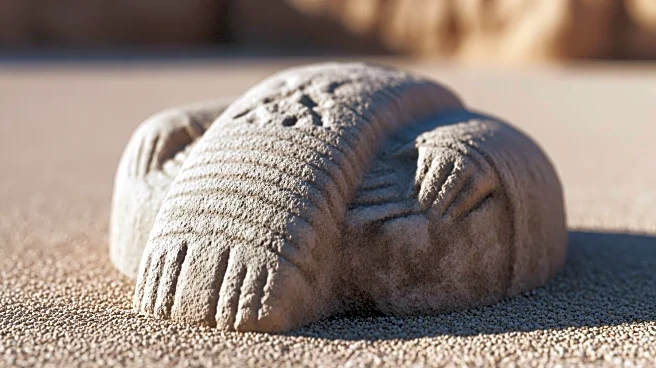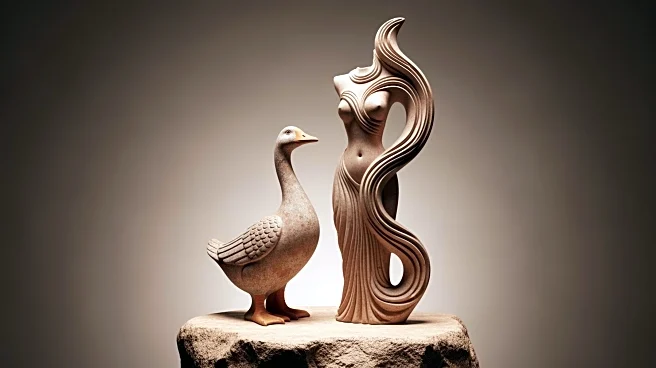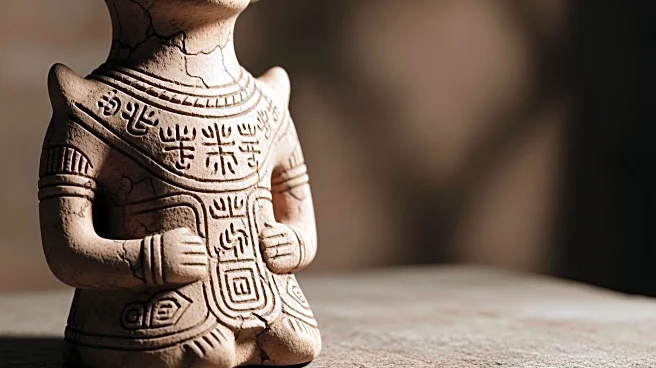What's Happening?
Archaeologists have uncovered a 12,000-year-old figurine at Nahal Ein Gev II, a Late Natufian village site in northern Israel. The figurine, made of local clay, depicts a crouching woman with a goose perched
on her back, and traces of red ocher were found on both figures. This discovery is significant as it represents the earliest naturalistic depiction of human-animal interaction and a woman in southwest Asia, offering insights into the cultural and symbolic practices of the Natufian people.
Why It's Important?
The discovery of this figurine provides valuable insights into the cultural and symbolic practices of the Natufian people, who lived during a transformative period in human history. It highlights the development of imagination and symbolic thinking, which played a crucial role in shaping human culture. The figurine also contributes to our understanding of the transition from mobile hunter-gatherer societies to settled communities, offering a glimpse into the early stages of human civilization.













